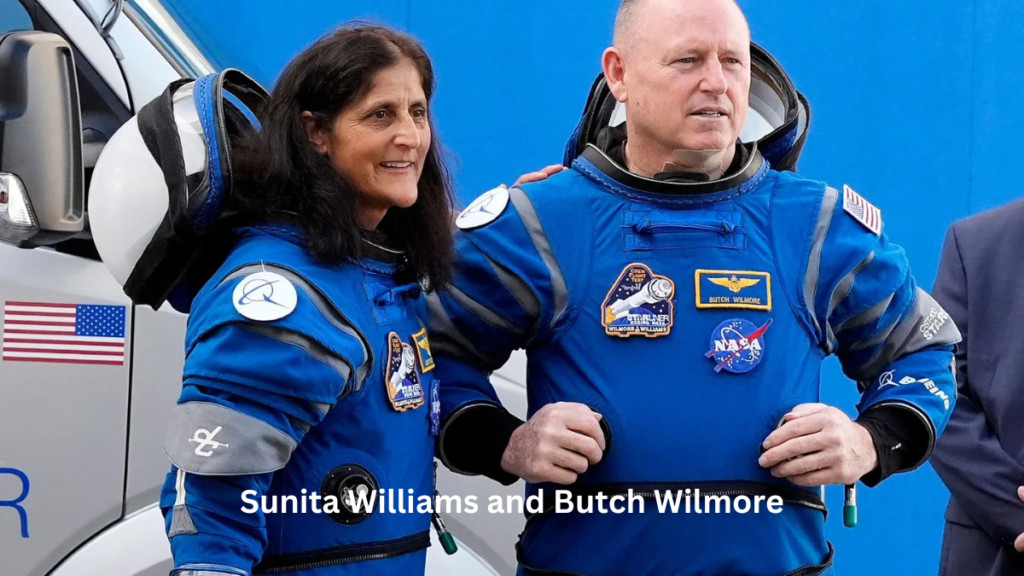
Sunita Williams’ Month-Long ISS Stay: Tackling Plant Growth in Space Amid Starliner Troubles
NASA astronauts Sunita Williams and Butch Wilmore along with other two members have been trapped in space for over a month now. Their mission initially had to last for just 10 days which was unfortunately extended due to some technical issues regarding Boeing Starliner spacecraft’s propulsion systems. Some of the major issues were helium leaks and thruster malfunctions which occurred on June 5 shortly after their launch. These issues were later detected on June 6 while the crew was docked at the International Space Station (ISS). While the technicians and engineers are working vigorously to solve these problems, the astronauts have come up with a plan to use this time to a significant scientific research.
Among their main activities, Sunita Williams and Butch Wilmore are busy exploring various innovative ways to water plants in absence of gravity. NASA says that this involves examining various plant’s roots and how these plants absorb water in a microgravity environment. These experiments are being conducted in a special module known as harmony module which is an essential part of the ISS. The harmony module connects International Space Labs and spacecraft and also provides air, electricity, water and other necessities and also act as a docking station for commercial crew vehicles.
The study on plants are mainly focused on techniques such as hydroponics and air circulation which are crucial in supporting plant growth abroad the spacecraft and future space habitats. The plant water management project was initiated by Sunita William which required setting up hardware inside the harmony module and performing tests with various liquid flow methods. Butch Wilmore contributed in the tests by employing hydroponics and air circulation techniques to examine the most effective way to nourish plants in space.
The tests include the use of fluid physics, particularly surface tension of fluids to counteract the absence of gravity. This test is vital for the success of long duration space missions which will involve growing food in absence of gravity and would become necessary in future. NASA highlighted the significance of these studies noting that they could perform future space farming methods and contribute to the sustainability of extended space travel.
Monitoring Health and Addressing Technical Issues: Sunita Williams’ Extended ISS Mission
In parallel to their plant research, Sunita Williams and Butch Wilmore also conducted veins scan using the ultrasound 2 device. By imaging each other’s veins they provided data to the doctors on earth helping to monitoring the effects of microgravity on human body. These tests provide crucial data on physiological changes which is essential for ensuring astronaut’s health during long-term missions.
While the astronauts were conducting these tests in space, NASA and Boeing are and dressing the technical issues which are causing troubles to the Starliner spacecraft. Recently, ground hot fire testing of the spacecraft’s reaction control system thruster was conducted at the White Sands Test Facility in New Mexico. The test was conducted to mainly monitor the firing of engine under conditions similar to those experience during the spacecraft approach to the ISS. The goal was to make sure the thruster’s reliability and safety are up to the mark for the astronauts’ safe return journey to Earth.
NASA is planning on a media teleconference on 25th of July to give a brief update to the public on the mission’s status and astronauts’ potential return date. NASA will provide latest developments in the star liner technical repairs and insights from recent ground testing. Although no exact return date has been declared yet, NASA’s commercial crew program director, Steve Stich said that the astronauts my return by the end of July if all issues are resolved.
Starliner Mission: A Crucial Test for NASA’s Future in Space Exploration
This mission, part of NASA’s Commercial Crew Program is considered as a comprehensive test of the Starliner spacecraft’s capabilities. Keeping the mission delays aside, the extended mission has provided valuable research opportunities to the astronauts. Boeing’s Mark Nappi emphasized that in an emergency, the spacecraft along with its crew could return to Earth immediately. However, the company is deliberately focused on resolving the issues before proceeding with the decent procedure to ensure the crew’s safety.
The successful resolution of these issues is crucial for certifying the Starliner for future missions. This mission is a significant milestone in NASA’s efforts to expand access to low Earth orbit and the ISS, supporting more scientific research and commercial activities in space. As the astronauts continue their work and engineers address the spacecraft’s problems, the mission underscores the resilience and adaptability required for space exploration.
To read more topics, please visit: https://insightfulbharat.com

